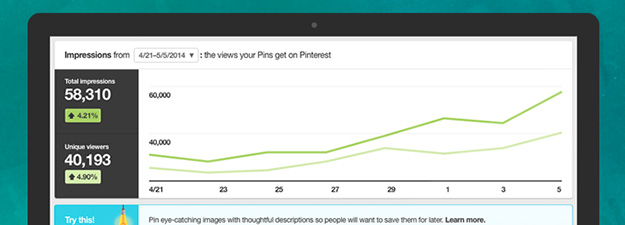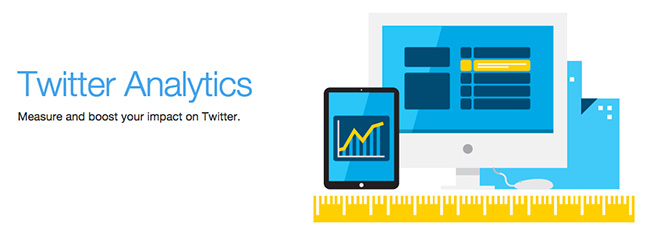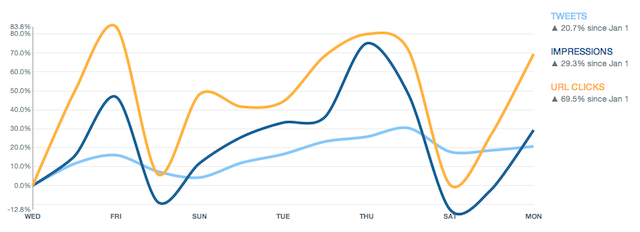
Show Not Tell: When to Use Instagram for Your Business
by Melanie Wolske May 19th, 2017
Social media apps are an increasingly vital part of successful marketing campaigns—they can spread a brand’s message quickly and broadly. Now that more people are searching online on their smartphones than on their computers, reaching out via mobile apps that allow users to easily browse social media can be immensely effective.
One of the most popular social media apps these days is Instagram, which has also been catching marketers’ attention more and more in recent years. In fact, ad impressions on the platform multiplied more than 13-fold from 50 million in August 2015 to 670 million in December 2016. 1
About Instagram
Instagram is a social network that allows the mobile sharing of photos and videos. Launched in 2010, Instagram’s popularity has soared rapidly.
- By December 2014, the platform counted over 300 million users, surpassing social media giant Twitter. 2
- Facebook acquired the service in April 2012 for approximately $1 billion in cash and stock. 3
- While Facebook grew by 3% in the following year, Instagram expanded by a whopping 23%.
- The company’s COO Emily White credited “the sophistication of cameras on smartphones” for the app’s remarkable rise, citing the ubiquity of smartphones at fashion shows as an example. 4
- In 2013, Instagram introduced sponsored post advertising for U.S. users with promotional ads by fashion brand Michael Kors. 5
Instagram: Sharing Moments Instantly
Instagram’s success essentially lies in making it really easy for people to do what they already love doing—taking and sharing pictures. In addition,
Instagram offers a vast number of photographic filters that can be applied to uploaded photos and videos, making photo sharing creative and fun. Any uploads may be accompanied by hashtags or geotags. Users can also leave comments below posts.
In 2013, Instagram added the “Direct” feature, which allows users to send photos and videos to others directly. Instagram accounts can be linked to Facebook, Twitter, Tumblr, and Flickr. The app is distributed through the App Store, Google Play, and Windows Phone Store. Even though users can only upload pictures and videos through mobile devices, users may also access their feed on a desktop computer.
In May 2016, Instagram introduced several big changes, including an algorithmic newsfeed. Three months later, the platform added a new feature called “Instagram Stories,” which lets users create short videos (and add text, drawings, filters or stickers) that are deleted after 24 hours, ostensibly responding to Snapchat’s immense success. Shortly after its launch, the “Stories” feature had already garnered 100 million daily views. 6 In late 2016, Instagram added a live video streaming future similar to Periscope or Facebook Live.
Is Instagram Right for Your Business?
Given Instagram’s wild success, it is no surprise that countless brands have joined the network to promote their products and services. According to Simply Measured, more than half of the world’s leading brands have an Instagram account. Instagram, however, also has plenty of marketing opportunities to offer for small businesses.
Real and Personable Applications
The photo- and video-sharing platform can help you add authenticity and warmth to your brand. While visually driven industries like fashion or food are perhaps most commonly associated with the network, all kinds of companies can benefit from Instagram’s enormous user base and easy-to-use application.
Simple and Easy to Use Anywhere
First of all, Instagram is extremely accessible. You simply download the free app, take a picture, make some edits, add a caption, and share with your followers. In order to increase your reach, include a geo-location and a number of relevant hashtags. For instance, if you are a local pet groomer, you might post pictures of freshly coiffed pups, use popular hashtags like “DogsOfInstagram,” and make sure that your business information is complete and accurate.
Let Your Brand Story Shine
If your product or service is not exactly visually enthralling, you can still make your brand more personable by sharing fun office moments or showcasing your community engagement. Loyal Instagram users follow business accounts because they are interested in that particular industry and because they like the type of content the company is sharing.
Evaluate How Instagram Can Enhance Your Marketing
Instagram is one of the perhaps most accessible social media platforms, but it’s still worth considering whether Instagram is an appropriate channel for
your social media marketing strategy. Just because it is a popular platform does not necessarily mean that it is the right one for you. A common mistake businesses make is treating social media as an afterthought. Failure to develop a thorough social media marketing plan can easily result in a waste of time and money. Determining the ROI of social media campaigns is already a difficult undertaking, so maximize your chances of success by carefully evaluating if and how Instagram can meet your marketing goals.
Examine your business’ needs and ask yourself these questions:
- Can you create magnetic visual content?
- Do you want to reach a wide audience?
- Do you have the time to post regularly?
- Can you express a strong brand identity/aesthetic?
- Are you willing to engage your community?
Next Step: Acquaint Yourself with Instagram’s Features
If you confidently answered these in the affirmative, you will want to familiarize yourself with Instagram’s features and practices. Six years after its
introduction, Instagram has expanded its features immensely, giving you a multitude of possibilities for channeling the app’s marketing potential. To develop an effective Instagram marketing strategy, you can now begin to think about Instagram best practices to enhance your campaigns.
Additional Sources:
1 – http://www.mediapost.com/publications/article/267898/instagrams-popularity-pushes-brands-toward-more-v.html
2 – http://mashable.com/2014/12/10/instagram-300-million-users/
3 – http://abcnews.go.com/blogs/technology/2012/04/facebook-buys-instagram-for-1-billion/
4 – http://wwd.com/globe-news/digital/instagrams-emily-white-talks-engagement-in-a-mobile-world-7255132/
5 – http://thenextweb.com/facebook/2013/11/01/fashion-designer-brand-michael-kors-becomes-first-run-ads-instagram-screenshot/
6 – http://www.digitaltrends.com/social-media/instagram-stories-views/









